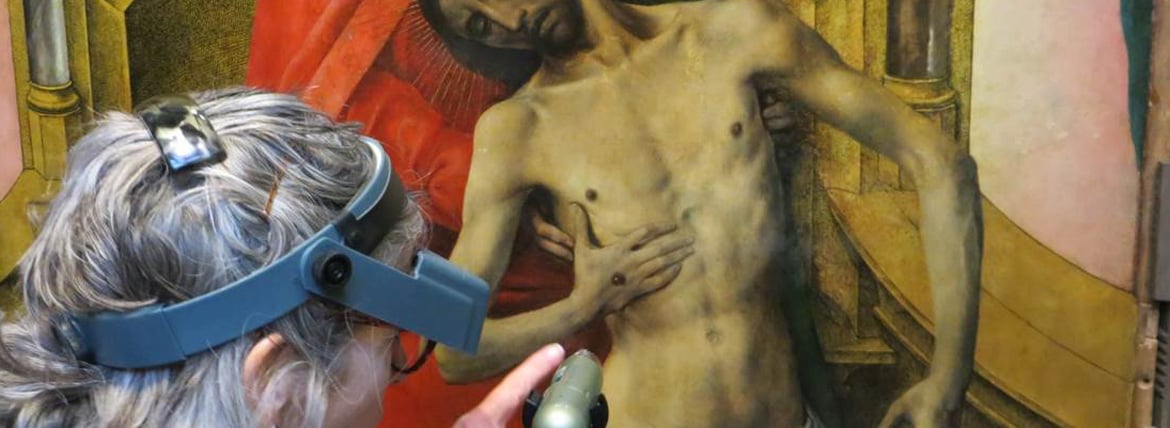
The Trinity Panels by Hugo van der Goes
Move to new location at Scottish National Gallery provides opportunity for study
Materials and techniques
Detailed study can also reveal more about the way the work was painted.
After the design was drawn, gold leaf was laid onto the panel in the organ and throne areas, over a preparatory red clay or bole layer. The artist marked the contours of the organ onto the flat gold surface using a fine tool which created parallel lines that are barely perceptible with the unaided eye.
The details of shading are executed skilfully in hatched lines of black paint or ink, in a style similar to that of the underdrawing.
The silver leaf of the organ pipes is well-preserved with relatively little tarnishing. Patches of silver overpaint can be seen covering small damages or blemishes. The black cross hatching here is particularly fine.
Freehand incisions to mark out the position of the concave hollows in the pipes are perceptible only in a raking light.
The helmet appears to be painted on a thick piece of tinfoil which was then glued to the panel surface; its relative density can be seen here in the x-ray as a strong white shape while the thin layer of gold leaf of the shield below hardly registers in the x-ray.
This technique was used for portrait heads in a few other early Netherlandish paintings, including the head of Tomasso Portinari in the Portinari Altarpiece of 1475, also by Hugo van der Goes. However, this is the first known example of an object (rather than a head) being painted on a tinfoil cutout.
This image shows the edge of the helmet, with the thick cut edge of tinfoil. The decorative metalwork and jewels were painted using quite thick touches of impasto. Its appearance now is marred by heavy, brown overpaint.







